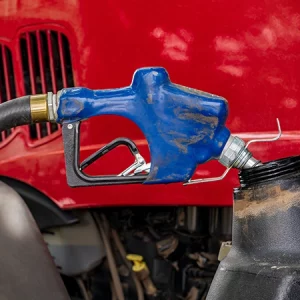
Whilst most heating oil tanks will last around twenty years, as they age the likelihood of problems increases as they age. It’s important to check your tank regularly, especially in advance of any heating oil deliveries. If your tank is over 10 years old, it’s even more important to check for any signs of damage, or for risks of leaks and spillages.
So if it’s time to replace your old, damaged domestic oil tank, our expert tank team are here to guide you through your options. To learn more about the process of heating oil tank replacement, read our comprehensive guide below.
When to Replace Your Heating Oil Tank
A leak or a spill from a damaged oil tank can cost up to £30,000 to clear up. That’s why it’s important tp arrange a full annual inspection of your oil storage tank by an OFTEC Registered Technician. They will be able to tell you if your tank needs replacing.
If you order your heating oil from Certas Energy, we will also give your tank a visual inspection every time we come to deliver your fuel. You also need to do regular tank checks yourself to protect your heating system, the environment and those who fill up your tank.
Heating Oil Tank Checklist:
- Check for signs of damage, such as bulges, cracks, rust, discolouration or major dents. These are signals your tank has weakened.
- Regularly check for spills and leaks and keep an eye on your pipework.
- Make sure you have an oil spill kit, just in case, with drain blockers, leak-sealing putty and absorbent materials
- Make sure fuel gauges and fill points are in a good working condition. If they aren’t, your tank could be dangerously overfilled
- Make sure vents and gauges are closed so that insects or dirt don’t get into them
- Keep an eye out for unusual increases in your fuel usage, they could potentially signal that your tank is no longer working correctly
- Keep your tank on a solid level surface.
Watch our video for expert hints and tips for tank maintenance from our OFTEC-registered engineer Donnie.
Heating Oil Tank Installation and Building Regulations
If you are installing a new tank it’S important that it complies with local Building Regulations. In England and Wales OFTEC registered technicians can self-certify their own work without involving Local Authority Building Control. If you choose someone who isn’t registered with a competent scheme like this, then you will have to obtain a Building Control Notice.
What Type of Oil Tank Can I Buy?
Building regulations advise that all new oil tanks installed are bunded rather than single skinned. A bunded oil tank is one that has a secondary containment to help protect against leaks and spillages. So, a bunded oil tank is essentially a tank within a tank.
In bunded tanks, the heating oil is contained in the inner tank, while the outer tank acts as protection. Should a leak or spillage occur, the fuel would be contained in the bund area. They also provide added protection from the weather and elements.
When Do You Need a Bunded Tank?
Under the latest bunded oil tank regulations for England and Wales, if the oil storage tank’s capacity is over 2500 litres, it must have a secondary containment (bunding).
However, even if your tank is only up to 2500 litres, a single skin oil tank might not be enough. Your tank may still need a secondary containment. This decision depends on the outcome of an individual site pollution risk assessment.
Oil tanks with less than 2500 litre capacity must be bunded if the tank is
- Within 10 metres of a controlled water source
- Located where a spill could run into an open drain or to a loose manhole cover
- Within 50 metres of a borehole or spring
- Over hard ground or hard surfaced ground that could enable spillage to reach controlled water
- Supplying heating oil to a building other than a single family dwelling
The good news is, we supply fully bunded tanks as standard, and all our tank installers are OFTEC registered.
Certas Energy Heating Oil Tanks
As the UK’s biggest heating oil supplier, we offer a range of top quality Kingspan domestic tanks in varying capacities depending on your needs. All of our tanks are eco-safe and bunded as standard, meaning not only do they comply with all regulations but you’ll have less worry about leaks or spills. For added peace of mind, we offer a ten year warranty on our tanks.
We know that a new heating oil tank is an investment. So, we can provide flexible payment plans for covering oil tank replacement costs to help you heat your home and stay on budget. We can also supply a wide range of replacement parts should you ever need them.
Certas Energy heating oil tanks are installed by fully trained OFTEC registered engineers. Safety is our top priority, so you’ll have peace of mind that you’re in good hands. We can even remove your old tank for you and fill your new one with oil ready for you to use.
Ordering Your Replacement Heating Oil Tank
If you suspect your tank is ready for a reboot, our friendly and helpful team can help. They can talk you through replacing your heating oil tank and how much new oil tanks cost. Our team will also advise which tank suits your needs best and explain what happens next.
Don’t leave it too late to replace your tank. A broken fuel storage tank can lead to costly environmental clean ups which you’ll have to pay for. We’re here to help you avoid that and can get your new tank up and running with one simple call to our expert team.
Speak to our knowledgeable team on 0345 600 3423 or find out more about heating oil tanks.






